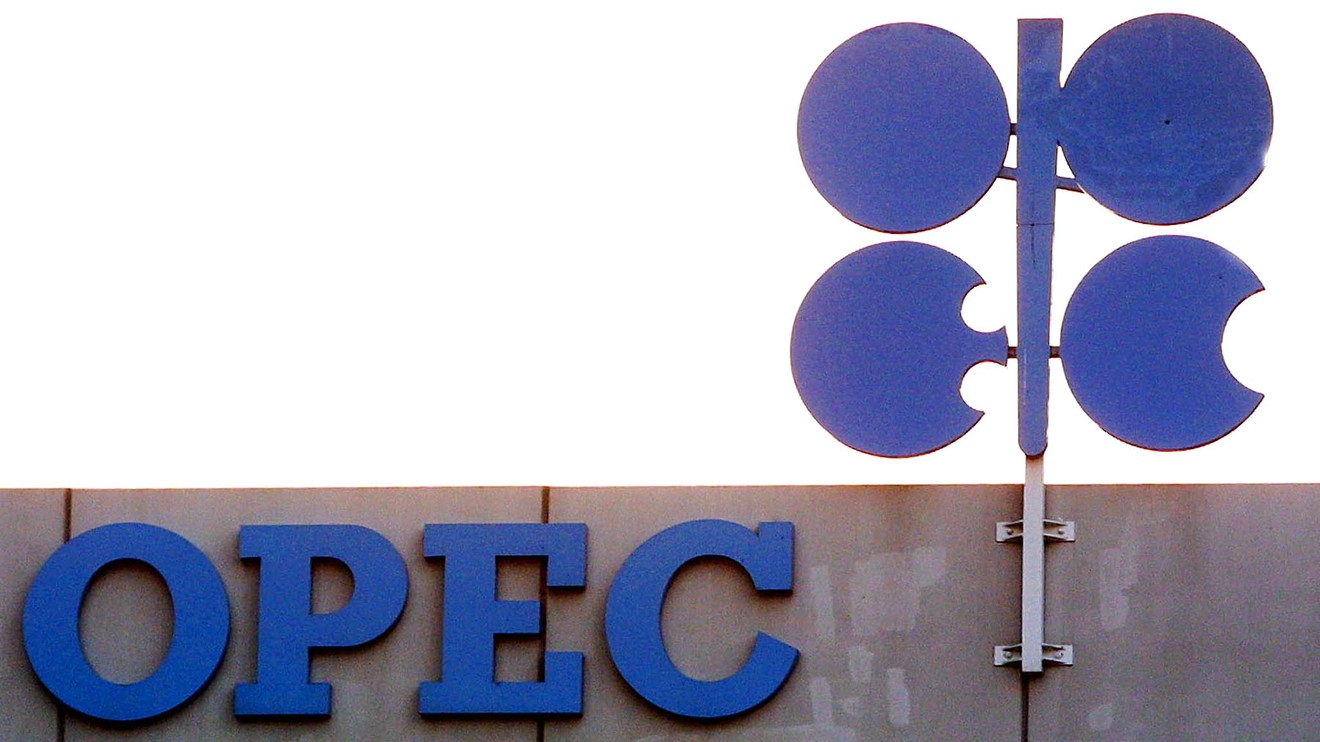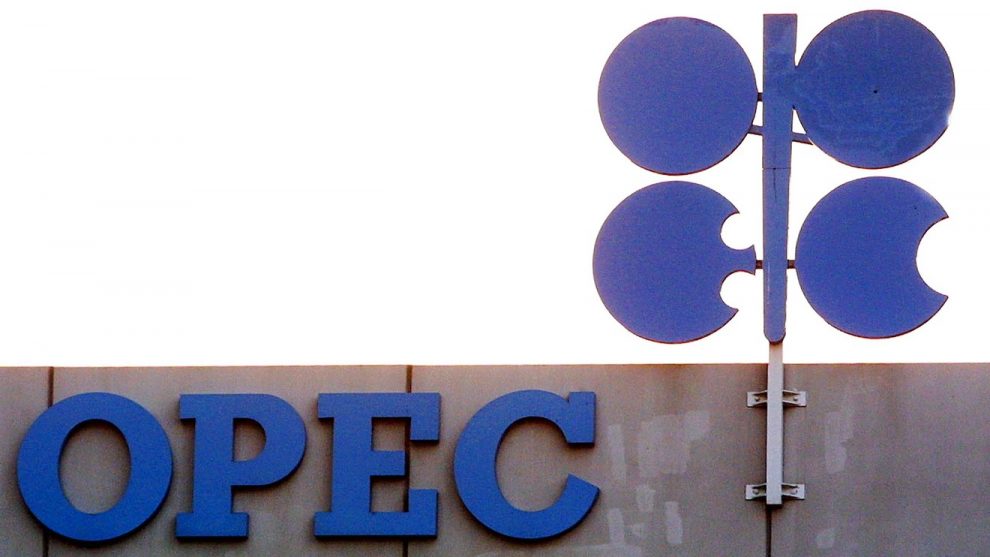
OPEC and allied nations agreed Saturday to extend a production cut of nearly 10 million barrels of oil a day through the end of July, hoping to encourage stability in energy markets hard hit by the global economic crisis resulting from the coronavirus pandemic.
Ministers of the cartel and outside nations led by Russia met via video conference to adopt the measure, aimed at cutting the excess production depressing prices as global aviation remains largely grounded due to the pandemic. The curbed output represents some 10% of the world’s overall supply.
But danger still lurks for the market as compliance with the output deal remains patchy while a number of countries are lifting business lockdowns imposed to combat the pandemic.
Algerian Oil Minister Mohamed Arkab, the current OPEC president, warned meeting attendees that the global oil inventory would soar to 1.5 billion barrels by the mid-point of this year. “Despite the progress to date, we cannot afford to rest on our laurels,” Arkab said. “The challenges we face remain daunting.”
That was a message echoed by Saudi Oil Minister Abdulaziz bin Salman, who acknowledged “we all have made sacrifices to make it where we are today.” He said he remained shocked by the day in April when U.S. oil futures plunged below zero. Russian Energy Minister Alexander Novak similarly called April “the worst month in history” for the global oil market.
U.S. Energy Secretary Dan Brouillette tweeted his applause Saturday for the extension, which he said comes “at a pivotal time as oil demand continues to recover and economies reopen around the world.”
The decision came in a unanimous vote, Energy Minister Suhail al-Mazrouei of the United Arab Emirates wrote on Twitter. He called it “a courageous decision.”
But it is only a one-month extension of a production cut that was deep enough “to keep prices from going so low that it creates global financial risk but not enough to make prices very high, which would be a burden to consumers in a recessionary time,” said Amy Myers Jaffe, senior fellow at the Council for Foreign Relations.
“There is so much uncertainty that I think they took a conservative approach,” she said. “You don’t know how much production is going to come back on. You don’t know what’s going to happen with demand. You don’t know if there’s going to be a second (pandemic) wave.”
Analysts had expected only a one-month extension given the still fluctuating level of demand.
“If the demand is great, countries like Russia will want to produce more oil, so they probably won’t want to get locked into a longer-term deal that may not help them,” said Jacques Rousseau, managing director at Clearview Energy Partners.
OPEC+ had initially agreed in April that it would cut supply by 9.7 million barrels per day (bpd) during May-June to prop up prices that collapsed due to the coronavirus crisis. Those cuts were due to taper to 7.7 million bpd from July to December.
“The agreements went ahead as planned,” Iranian Oil Minister Bijan Zanganeh told Shana news agency after OPEC approved extending the deal until July during a video conference, according to Reuters. “The main issue was a lack of compliance of members like Iraq with production cut quota, and it was decided that they compensate for that in coming months,” he said.
In a statement Saturday posted on the OPEC website, Assem Jihad, Iraq’s Ministry of Oil spokesperson, said that “despite the economic and financial circumstances that Iraq is facing, the country remains committed to the agreement.”
A Bloomberg survey released on June 1, however, pegged Iraq’s compliance with its pledged production cut at just 42% in May. In all, OPEC reduced output by 5.84 million barrels a day to 24.6 million barrels a day last month, the lowest since 2002, for a compliance rate of 77%, the survey said.
Ahead of the talks, OPEC sources said Riyadh had been considering an extension to August or even December.
Saudi Arabia, OPEC’s de facto leader, and Russia have to perform a balancing act of pushing up oil prices to meet their budget needs while not driving them much above $50 a barrel to avoid encouraging a resurgence of rival U.S. shale production.
“In a refreshing change for OPEC’s decisiveness, it looks like we already have a draft deal,” Rystad Energy’s Bjornar Tonhaugen said in email Saturday.
“Such a deal, with increased monthly monitoring by the JMMC committee, would mark the continuation of a fundamental support for oil prices for the coming months,” he said.
Oil has made a huge comeback from the historic dip for U.S. benchmark prices into negative price territory in May, with the recovery in large part due to the production-cut agreement by the Organization of Petroleum Exporting Countries and its allies, and involuntary output reductions in the U.S.
The rebound in prices is a “positive development for the market and a signal that we’ve probably moved through the worst of the underlying imbalance” in the oil market, says Greg Liebl, senior investment strategist at Parametric Portfolio Associates.
Prices CLN20, -1.46% have more than doubled since the negative $37.63 a barrel futures settlement on April 20. At $39.55 a barrel on Friday, however, they were more than 35% lower year to date. Prices on Friday got an added boost as upbeat U.S. jobs data for May fed expectations for a further recovery in energy demand.
Liebl says it’s important to remember that despite the rise in May, WTI is still lower than in early March, just before Saudi Arabia and Russia called off their deal to cut output. Prices settled around $46 the day before news of the deal’s collapse.
“The majority of companies in the industry don’t make money at these low prices, and even Russia and Saudi [Arabia] need oil to be higher than $55 a barrel to balance their budgets,” said Alissa Corcoran, analyst and director of research at Kopernik Global Investors. “These low prices aren’t sustainable for any meaningful period of time, which has posed very attractive buying opportunities for us.”
However, the OPEC+ decision to extend production cuts may cause supplies to tighten too much before year end, said Leigh Goehring, managing partner at investment firm Goehring & Rozencwajg. “The rolling over of OPEC production cuts will cause the global oil market to fall into severe deficit by the fourth quarter.”
U.S. shale production may see a “huge fall-off” starting in the third quarter, Goehring said. Combined with a continued rebound in demand, that would result in “huge inventory drawdowns” by the middle of the third quarter that will accelerate into the fourth quarter.
Still, higher prices may eventually lead to more shale production, and the path for demand remains uncertain.
“There is a risk that production from North American shale creeps higher, responding to a partial recovery in crude prices, while the oil demand recovery is expected to slow down by September…in the seasonal weaker period,” says Chris Midgley, global head of analytics at S&P Global Platts.
“There is also the risk of secondary waves of [Covid-19] infection, posing a significant risk to oil demand” and prices, he adds.











Add Comment